Whether you’ve heard of kokedama before or not, you’ll be sure to want to create your own when you see just how easy they are to make and how stunning they look. Adding these to your houseplant collection is a great way to add something special.
What is kokedama?
Kokedama is a Japanese art of surrounding the roots of a plant with soil and moss, with the word kokedama translating to ‘moss ball’.
They can be created for indoor and outdoor use, but I think they have a striking appearance when you have a few in one area to create a floating forest in the home because it has a lovely peaceful effect.
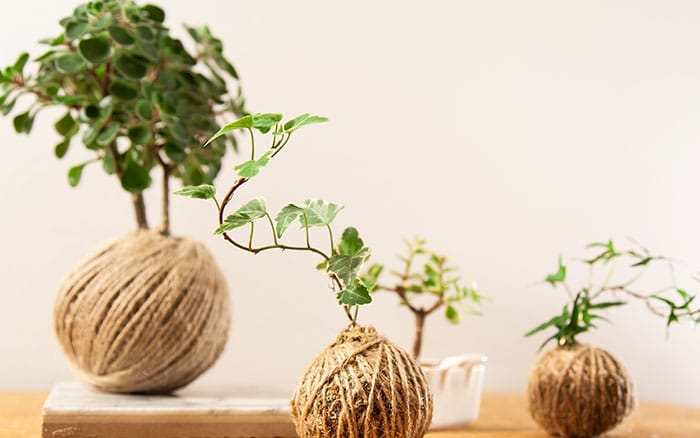
Alternatively, if you would rather not have them hanging, they can be sat on trays to make a decorative display.
How to make a kokedama
When making or buying kokedamas, I recommend doing so in spring or summer, so the plants have time to acclimatise to their new home.
You will need:
- Plant
- Sheet moss
- Bonsai compost
- All-purpose compost
- Twine
- Scissors
- Bowl or tray
Step one
Mix half and half of the bonsai compost and all-purpose compost in a bowl or on a tray. Whilst mixing, add water gradually to create a thick consistency.
Step two
Take the plant from its original pot and use your hands to carefully remove the compost surrounding the roots.
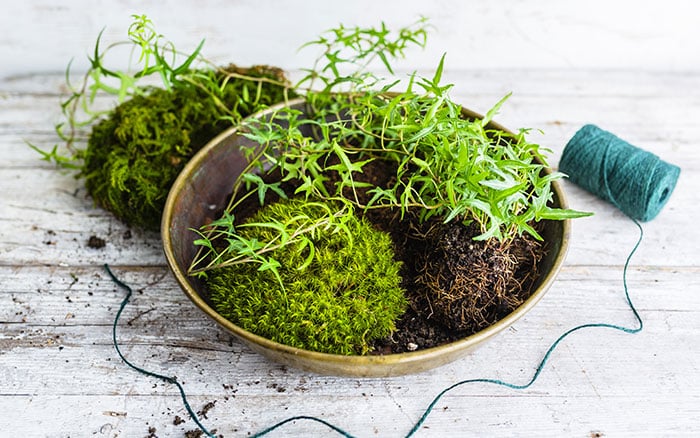
Step three
Gather a large handful of the mixture and create a ball, gently squeezing to remove any excess water. When it is holding together well, split the ball into half using a twisting motion.
Step four
Position the plant between the two halves of compost and repack the ball around the roots of the plant. Fill any little gaps with leftover compost mix.
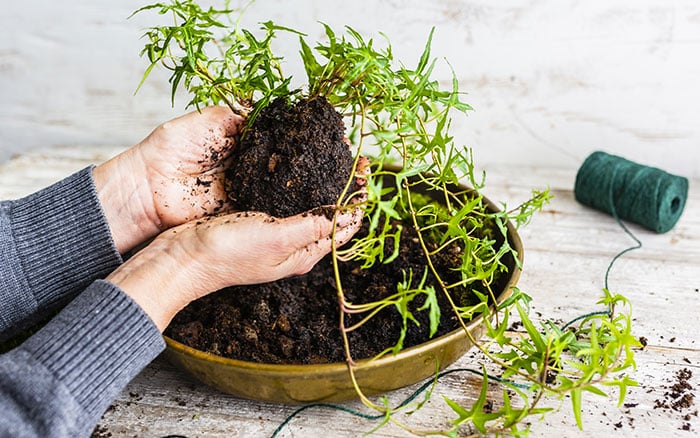
Step five
Once you’ve got a well-formed ball, lay the moss sheet on the table, and place the ball in the middle. Wrap the moss around the ball to cover it – you might need more than one piece to do this.
Step six
Use the twine to tie around the circumference of the ball and knot it to keep it firmly in place. Tie extra string to create to allow it to be hung if that is your display preference.
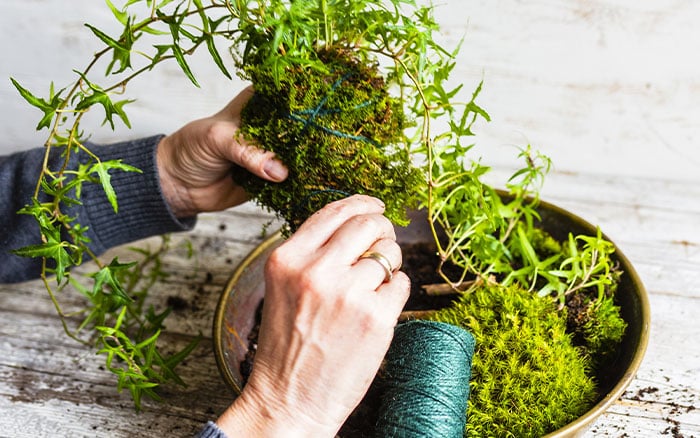
Care
These plants look the part, but they’ll need plenty of attention. They can sometimes need to be redone or even moved to a pot for a while to recover. Also, there isn’t a ‘one size fits all’ for care and positioning, as the choice of plant will determine the level or care and where it is placed in your home too.
Due to air being able to get to the kokedama easily, they can dry out quite fast. So, when the moss ball is dry or turns lighter in colour, they can be watered.
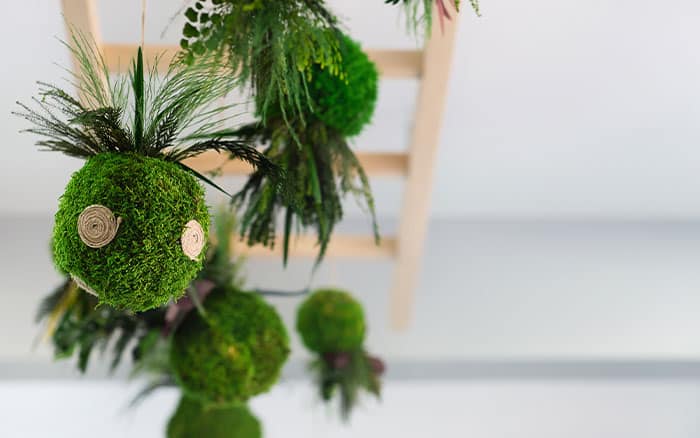
Watering is slightly different to most other houseplants, as it is done by soaking the ball in tepid water for around 10 minutes, then gently squeezing to remove excess water, leaving it to drip-dry for a while before returning it to its home.
High humidity levels are the key to keeping your kokedamas happy (unless you have opted for succulents). Therefore, displaying them on a gravel tray with water is a handy idea, or have a humidifier nearby.
Misting may be recommended, but the levels of humidity they need will mean you are constantly misting by hand, so the other alternatives may be more suitable.
Plants to use
If you are new to the art, then it’s ideal to start with a plant that is reasonably easy to grow. A regular issue that kokedama owners find is that the air is too dry, so opt for plants that can tolerate dry air such as succulents or a philodendron.
To make your kokedama last longer, choose plants that are smaller and won’t outgrow their container quickly.
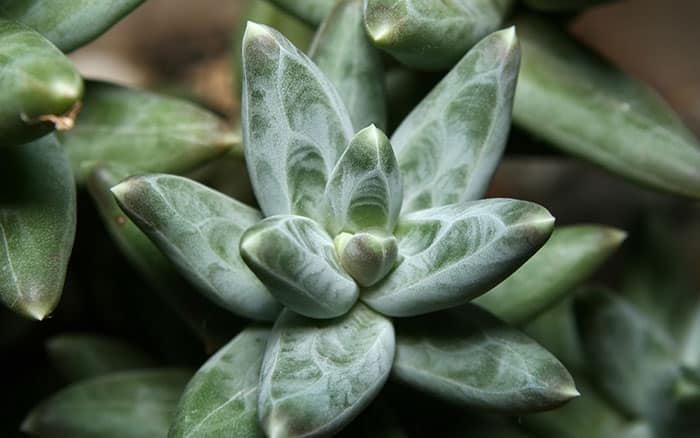
Smaller succulents are a great option, or small bromeliads or Humata tyermanii (white rabbit’s foot fern). Bear in mind that your plant choice will impact where it is situated.
Also, don’t be disheartened if it doesn’t last forever, as some plants can be repotted into a pot and kept as a regular houseplant, or if it’s an outdoor kokedama those plants could be planted out in your beds and borders.
So, try a new challenge and see if you can create a kokedama that will add something new and special to your indoor décor. I’d love to see your creations, so show me on Twitter, Instagram, and Facebook. To learn more about houseplants and bringing them to your interior, you can pre-order my book, My Houseplant Changed My Life.
David Domoney is a Chartered Horticulturalist, Broadcaster, and Author. David has worked with a number of the UK’s leading garden retailers as a plant buyer and strategic consultant. With more than 30 years experience, in horticulture, David is as passionate about plants now as he was when he bought his first plant at a village fete.





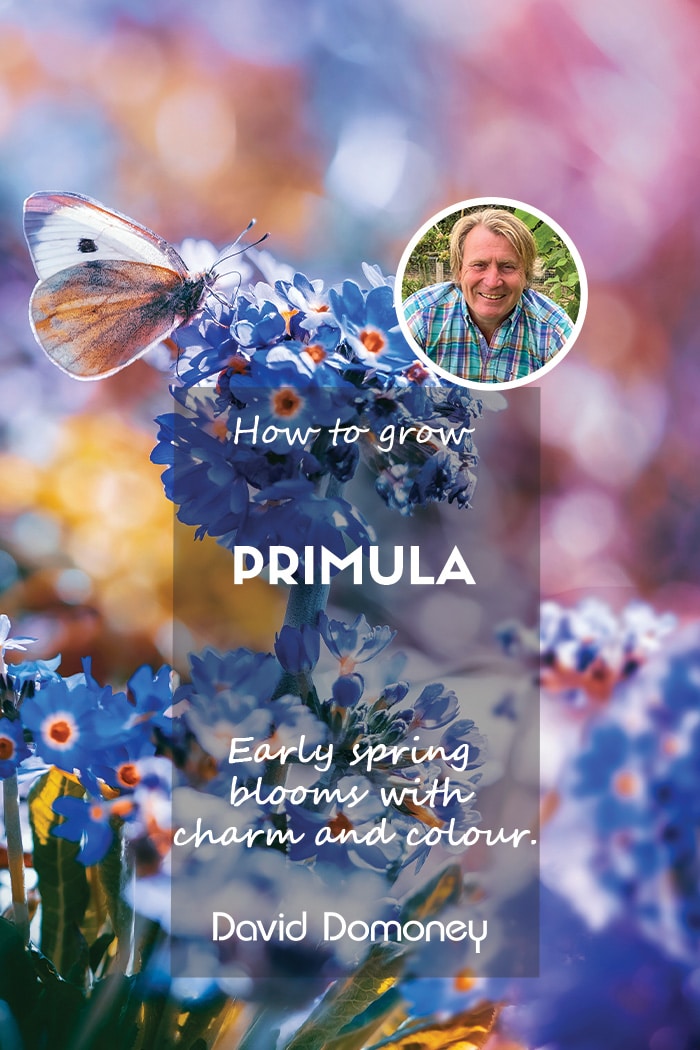

Leave A Comment